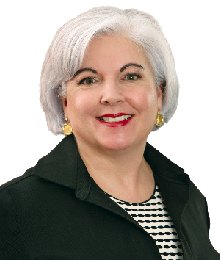Wells Fargo Foothill’s Lender Finance division grew out of Wells Fargo’s 1998 acquisition of Norwest Corporation, which since 1995 had owned The Foothill Group, Inc.
Founded in 1970 specifically to provide alternative financing vehicles, The Foothill Group expanded to include several lending units dedicated to serving specific segments of the marketplace — including Foothill Capital Corporation and Century Business Corporation.

A Texas native and accomplished equestrian (her two children ride competitively) Petro gracefully personifies the Wells Fargo image of professionalism and poise. At the same time, with a background spanning more than 20 years in the finance industry, nearly all of them spent in ABL, Petro embodies a new generation of financier whose experience is defined exclusively by the delivery of specialty products.
“I began focusing on this niche in 1992 and have been able to develop it successfully ever since,” says Petro. “In a way, every deal becomes a learning experience. I’ve always found fascinating the variety of creative methods companies can rely on for risk analysis and to meet credit challenges.”
Petro began her career in finance as an undergrad at Ohio’s Kent State. She went on to attain her MBA from the University of Texas at Austin and from there went to work for Transamerica, working her way up to senior vice president and national marketing manager of the Financial Services Funding Division. Petro says it was while at Transamerica that she began developing the credit philosophy and the underwriting standards she relies on today.
“I look for companies that are properly capitalized,” she explains. “Their reporting systems need to be accurate, with a high level of integrity and the ability to report in a timely basis.”
Today, her knowledge and passion for the industry are hard to miss. Petro’s comments are precise and well thought-out, peppered with a noticeable air of excitement. It’s clear she loves what she does. The fruit of her efforts, Wells Fargo Foothill Lender Finance, is one of five lending units that are part of the Foothill division, which has itself grown to become one of the largest bank-owned asset-based lending companies in U.S.
As the executive vice president and division manager of Lender Finance, Petro is in charge of a staff of 40. Her team provides funding to specialty commercial finance companies, such as equipment leasing companies, asset-based lenders and factors, among others. Products include revolving lines of credit from $10 million to $50 million, with larger transactions syndicated through a proven network of participants.
Though her unit is part of a veritable banking behemoth, Petro is quick to point out that Lender Finance is always on the lookout for promising startups, and while credit history is important, deals are often crafted on the strength of the personnel involved. “We look for track record of management — we quite often will finance start ups by looking at management experience, along with the amount of capital equity and a business plan,” she says.
When it comes to equipment leasing, Petro extols the virtues of specialization, saying the real opportunities for leasing companies are focused within industry niches. “If you can find a niche that’s large enough but still a specialty, than you have an advantage over the generalist,” Petro advises. “The more knowledge you have about a specific niche in an industry and about the vendors and the circumstances of the lessee, the better equipped you are to manage credit. That way, you can have very attractive growth and you can manage the downside of credit losses better.”
As for pitfalls, Petro doesn’t mince words. “I believe that fraud is probably the greatest risk … we take it very seriously.” To mitigate that risk, Petro’s unit conducts frequent audits, which include cash tracing, thus enabling the company to know whether payments are being made.
As Petro explains, Wells Fargo’s knowledge of the industries it serves and its status as the only AAA-rated bank in the country gives the company unique strength and flexibility at all points in the business cycle. And that, she says, is an advantage that sets her unit apart from competitors.
“The cheapest money is not always the deepest or most certain money,” says Petro. “If it’s the cheapest money you may not have the depth of understanding of the industry to permit a lender to work through a downturn.”
Over the past year, Petro and her team have kept busy. According to its website recent transactions have included a $25 million credit facility to BayView Funding, $74.5 million to Firestone Financial, and $75 million to HPSC, Inc., among others.
Petro says success ultimately relies on being able to walk a fine line, resisting the temptations to become too liberal in terms of credit while still maintaining an active, healthy portfolio. “Right now, all lenders are facing a difficult period in the economy. You have abundant credit availability, the economy is still growing and is still strong, but at the same time you have to balance the knowledge that there will ultimately be a downturn,” she says.
“I always say lending is really the art of balancing marketing and credit. If you’re too tight with credit you die a slow death; if you’re too liberal with marketing and putting on business then you’ll die a fast death, but you’ll die either way.”
No tags available